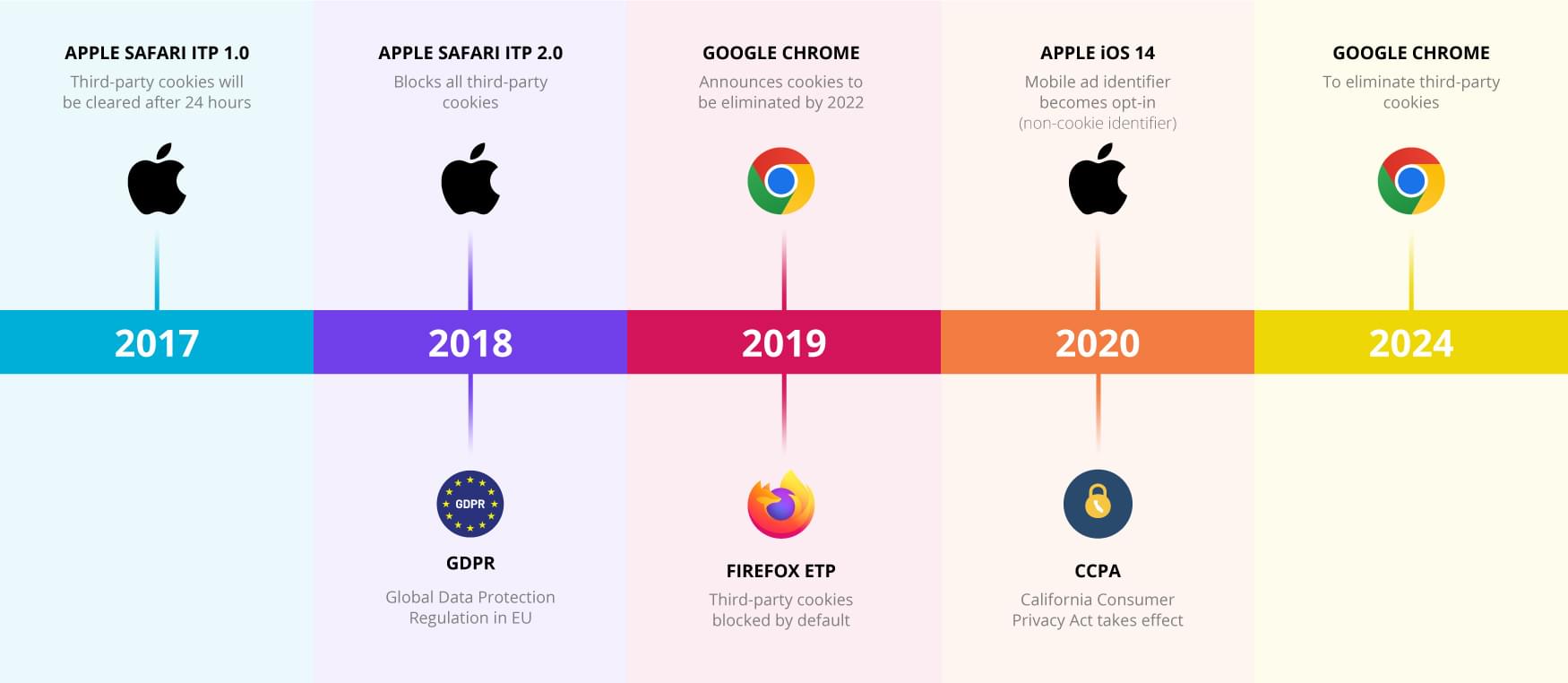The cookie apocalypse is coming
Regardless of whether you view it as a tragic apocalypse or the dawn of data independence, one thing is for certain: the days of tracking third-party cookies are numbered. But before we shift into business survival mode, let’s unpack some basics.
What are cookies and why are they under attack?
Internet cookies – also known as HTTP cookies – are tiny snippets of data that get added to a user’s web browser when visiting a website. In addition to letting sites remember helpful titbits like user logins and shopping cart items, cookies have also come to play a critical role in targeted advertising and marketing analytics.
The past few years, however, have seen a shift in consumer privacy laws, with legislation like Europe’s General Data Protection Regulation (GDPR), California’s Consumer Privacy Act (CCPA) and South Africa’s Protection of Personal Information Act (POPIA) coming into play.
Along with giving consumers more rights around their data, these regulations have raised awareness around what personal information is collected online, how it is sold, and the security implications this may have. The result has been a growing public resistance to cookie tracking, which has already triggered action from browsers like Firefox and Chrome, as well as Apple’s iOS.
First-party vs. third-party cookies
In simple terms, first-party cookies are added by the site that a user visits, while third-party cookies are added by a third-party server, such as an advertising technology vendor – this explains how those pesky pop-up ads seemingly follow you around.

When is D-day?
While Mozilla Firefox and Apple’s Safari have already blocked the tracking of third-party cookies, Google – who owns two-thirds of the desktop browser market and one of the internet’s most powerful advertising platforms – will begin phasing out third-party cookies in Chrome during the second half of 2024.

Despite these delays, the third-party cookie apocalypse is inevitable and will have far-reaching effects beyond the advertising industry.
What challenges could this pose for business?
Without cookies, advertisers will have access to significantly less data. For example, tracking the customer journey of a user as they move from one site to another will no longer be possible, and retargeting customers based on previous interactions with ads is another feature that would disappear.
For businesses that depend on online advertising, the deprecation of third-party cookies will therefore likely reduce the conversion rates for much of their retargeting ads and campaigns. The size of their retargeting audience will likely get smaller, and the campaigns based on lookalike audiences may suffer.
In terms of financial implications, it has been reported by McKinsey that up to $10 billion in publisher revenue is at risk in the US alone. Another report by Publicis Sapient suggests organisations that are unprepared for the cookie apocalypse risk losing up to 23% of their marketing attributable revenue over the next three years.
How to ensure your business survives
As cookie deprecation continues, businesses need to focus on building their data independence. This will entail reconsidering how they collect customer data, as well as how they manage and activate it in media buying.
Businesses that employ software which integrates first-party data from multiple systems have the best chance of surviving in a cookie-less future. Customer data platforms (CDPs) or customer management platforms (CMPs) are appealing because they offer a single view of a business’ customers, which can power omnichannel personlisation. These platforms store information like email addresses, CRM data, transactional information, and data collected from websites.
There is also the idea of shifting from a “cookie-focused” strategy to one that is “identity-focused” and exploring ways to incentivise people to log in to the site and identify themselves. This creates a need for other means of interacting with customers and bringing them back more regularly, which – in the absence of cookies – essentially creates first-party data that can be used to monitor a customer’s behaviour.
Regardless of which route you take; the time has come to begin shifting to a first-party data strategy. Not only will it prove critical to mitigating the risk of future data regulation penalties, a solid first-party data strategy will also be key to offering personalised customer experience in a world that has come to expect it.